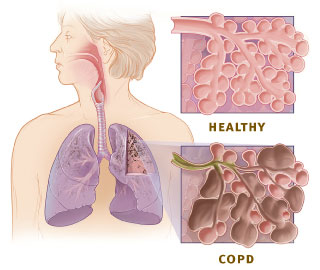An article
published in Mail Online about the story of a young lady, who in spite of
regular screening for breast cancer, preferring for prophylactic mastectomy
before the age of 31, discovered that she is already harboring a 6 cm tumor in
her breast. The article can be accessed here.
Emma Cunliffe has mutated BRCA (BReast CAncer)
gene that dramatically increases the risk of cancers; breast and ovarian cancer
in particular.
Her mother and grandmother both had been diagnosed in their early
30s for breast cancer. Now, she plans to have her ovaries removed after having
a family.
Role
of BRCA genes:
Faults or breaks develop in the DNAs (Deoxyribonucleic Acid) that
house several genes, may be following repeated divisions or other environmental
factors like radiation. The primary responsibility of the BRCA gene is to
signal for a protein that can repair the defects in the genes in association with
some other proteins. Both BRCA 1 and BRCA 2 protein interact with the protein produced by the RAD51 and PALB 2 gene to mend
breaks in DNAs.
BRCA 1 gene encodes a nuclear
phosphoprotein that acts as a tumour suppressor. The encoded protein combines
with other tumour suppressors, DNA damage sensors, and signal transducers to
form a large multi-subunit protein complex known as the BRCA1-associated genome
surveillance complex (BASC). This gene product associates with RNA polymerase
II, and through the C-terminal domain, also interacts with histone deacetylase
complexes. This protein thus plays a role in transcription, DNA repair of
double-stranded breaks, and recombination.
Mutated forms of the genes produce a protein
that is not perfect; hence, cannot do the repair work. This leaves the cells
multiply uncontrollably, without check.
Apart from breast cancer, mutations in the BRCA1 gene also increase the
risk of ovarian cancer, prostate cancer,
and colon cancer. The
BRCA1 gene is located on chromosome 17q21 -- the
long (q) arm of chromosome
17 at position 21.
BRCA 2 gene is located on the chromosome 13q12.3;
on the long (q) arm of chromosome
13 at position 12.3.
 |
| Heredity - autosomal dominant (AD) (Photo credit: Wikipedia) |
A woman’s lifetime risk of developing breast and/or ovarian cancer is greatly
increased if she inherits a harmful mutation in BRCA1 or BRCA2.
·
Breast cancer: About 12 percent of women in the
general population will develop breast cancer sometime during their lives. By
contrast, 55 to 65
percent of women who inherit a harmful BRCA1 mutation and around 45 percent of
women who inherit a harmful BRCA2 mutation will develop breast cancer by
age 70 years.
These genes also
increase breast cancer risk in men.
·
Ovarian cancer: About 1.4 percent of women in the
general population will develop ovarian cancer sometime during their lives. By
contrast, 39 percent of
women who inherit a harmful BRCA1 mutation and 11 to 17 percent of women
who inherit a harmful BRCA2 mutation will develop ovarian cancer
by age 70 years.
The first breast cancer gene faults to be found were BRCA1 and BRCA2. There are other genes
that significantly increase a woman's risk of breast cancer. They are called
TP53 and PTEN. Tests are available for the following genes;
·
BRCA1
·
BRCA2
·
TP53
·
PTEN genes
Researchers have found other common genes that can slightly
increase a woman's risk of developing breast cancer. No tests are available for
these genes yet but they include
·
CASP8
·
FGFR2
·
TNRCP
·
MAP3K1
·
rs4973768
·
LSP1
Rare genes that can also increase breast cancer risk
slightly include
·
CHEK2
·
ATM (ataxia
telangiectasia mutated)
·
BRIP1
·
PALB2
No individual tests are available for these genes yet.
Who all need to be screened for
defective genes?
·
Breast cancer
diagnosed before age 50 years
·
Ovarian cancer
·
Cancer in both
breasts
·
Both breast and
ovarian cancers
·
Multiple breast
cancers
·
Two or more primary
types of BRCA1- or BRCA2-related cancers in a
single family member
·
Cases of male breast
cancer
·
Ashkenazi Jewish ethnicity
·
Triple-negative (estrogen receptor negative, progesterone receptor negative, and HER2/neu negative) breast cancer
·
Pancreatic cancer
with breast or ovarian cancer in the same individual or on the same side of the
family
·
Two or more
relatives with breast cancer, one under age 50
·
Three or more
relatives with breast cancer at any age
·
A previously
identified BRCA1 or BRCA2 mutation in the family
In the instant case, MRI could not detect it as it was of a
cotton-wool consistency; it was reported.
Recommendation:
In these
high risk women;
1. Breast Self Examination (BSE) should
start as age of 20
2. Clinical Breast Examination (CBE) by
a heath care person at the same age
3. Contrast MRI and Mammogram, both, not
anyone, should start from 25 years or 10 years before the age at which the
breast cancer in family member is detected; but not before the age of 15.
Contrast MRI and Mammogram both act as complimentary, as MRI is more
sensitive, but less specific, gives more unnecessary warnings; Mammography, can
even detect some tumors which MRI cannot.
This
information is not at all a substitute for the opinion of your consultant.
...
Click here to Subscribe news feed from "Clinicianonnet; so that you do not miss out anything that can be valuable to you !!
...






